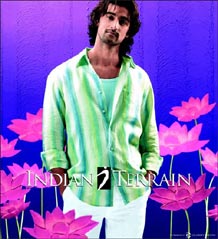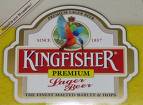Company: Celebrity Fashions
Agency: Contract
Brand Count : 170

Indian Terrain was launched in 2000 by Celebrity Fashions ltd: a leading exporter of garments. The brand occupied a significant share in the consumer space with in a short span of time. The brand had clocked Rs 35 crore with in 4 years of launch. The company which promotes this brand is a leading exporter to all major textile giants and is a 100 crore company.
I have noticed the large hoardings of Indian Terrain when I drive to the College but was sceptical about the future of the brand. I was not sure whether the brand has any serious plans for itself. The 4 page ad changed all that.
The brand is competing for space in the Rs 800 crore premium men's apparel market in India. The market currently is dominated by brands like Van heusen, Lious Phillippe, Arrow, Color Plus etc. The market is very juicy but the main entry barrier is the clout of the established brands. Hence it is common sense to understand that only those brands will succeed which has lot of money for brand building and some clutter busting positioning.
Indian Terrain after its launch had a good run up. The brand had a growth of around 15% every year and is reported as one of the fastest growing brands in the category.
Indian Terrain is positioned as a brand for the global Indian.The product is positioned as a stylish
 brand with focus on design and having an eye on fashion. The brand has a clear target segment in Men aged 25-40 who has an individualistic persona and who is a global Indian. The products strength is its quality and styling. Since the company is famous for its global clientele, quality will not be an issue.
brand with focus on design and having an eye on fashion. The brand has a clear target segment in Men aged 25-40 who has an individualistic persona and who is a global Indian. The products strength is its quality and styling. Since the company is famous for its global clientele, quality will not be an issue.Building a brand in the Apparel market is no kid's play. With a plethora of brand with excellent brand equity and quality, getting into the "Choice Set" of the customer is a herculean task. Indian Terrain had managed to get into the list very fast. The brand is said to have a clear idea of where it want to be. The owners envisage the brand to be worth Rs 100 crore by 2007. The brand was initially positioned as a Wear to Work brand. Inspired work wear was the motto. The idea is to relate success with the brand. The current positioning is tying the brand to being true to one self ( with a dash of Patriotism). The tagline is " The New Indian Spirit".The brand ambassador Kunal Kapoor personifies this brand value. What I liked most in the ads is that the brand is not eclipsed by the star. And wisely the brand is looking at print to built the equity. I have always felt that print works better in Apparel than TVC ( Raymonds may be an exception).
The fact that Anil Ambani has bought some stake in Celebrity Fashion shows that the brand has serious backing to fund its growth. In an unique association ,Bennett Coleman & Co ( Times of India group) has also a 12% stake in the company. That brings out the secret of the 4 page ad in ET.The association with the media giant will give the brand the right media to promote itself.
source:economictimes,businessline,unitedgarmentsnews,agencyfaqs











